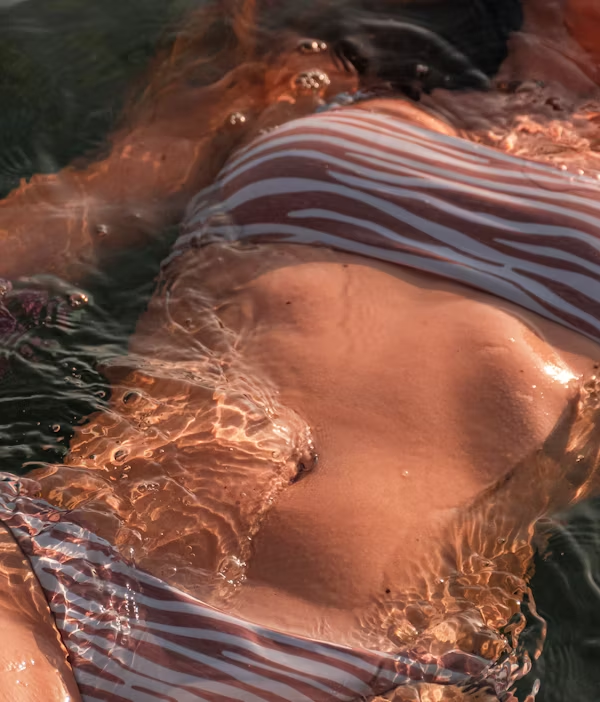
Trending topic
In recent years, you’ve likely seen the trend of ice baths on social media, with professional athletes from numerous sports touting their benefits. As a coach with over 28 years of experience, I’ve had the opportunity to use them myself and with the elite tennis, combat sports, and badminton players I train. Given my specific focus on tennis, I wanted to share a science-based perspective on this popular trend. My philosophy has always been to use ice baths as a targeted tool, only when needed, rather than a daily ritual. It’s important to remember that ice baths are not a shortcut to recovery. The real foundations of athletic performance lie in proper consistence , individualized programming, precise nutrition, optimal sleep, and a comprehensive approach to both mental and physical recovery. If you like an in depth details check Tennis Fitness https://www.amazon.com/tennis-fitness/dp/1492867969 Tennis Wellness & Performance https://www.amazon.com/dp/B0DPL48X51
Tennis is brutal. Explosive sprints, jarring stops, punishing groundstrokes, and grueling rallies – it all adds up. From pro’s in WTA , ATP and Junior players on tour , adding to the list the countless competitive players, the quest for faster recovery and sustained peak performance is key factor . Enter the ice bath: a chilling ritual as a recovery essential. Question is, does plunging into icy water truly deliver on its promises for tennis players? Let’s talk science and separate fact from fiction.
Why Tennis Players Feel the Burn
That deep ache setting in 24-48 hours after a tough match or intense drill? That’s Delayed Onset Muscle Soreness (DOMS). It stems from Exercise-Induced Muscle Damage (EIMD) – microscopic tears in muscle fibers caused by the eccentric contractions (muscle lengthening under load) through repetitive movements in tennis movements like lunging, braking, and serving. This damage triggers inflammation, releases markers like Creatine Kinase (CK), and leads to temporary losses in strength and function. Simply put, it minimize your ability to bounce back quickly for the next session or match.
How the Ice Bath Works: More Than Just Numbing Pain
Cold Water Immersion (CWI) combats this damage through several physiological pathways:
- Vasoconstriction: The cold causes blood vessels to narrow, reducing blood flow to the immersed areas. This directly minimize inflammation and swelling.
- Metabolic Slowdown & Pain Reduction: Lowering muscle temperature slows metabolic processes and reduces nerve conduction velocity, numbing pain perception.
- The “Flushing” Effect: The re-warming phase after exiting the bath is key. The initial constriction is followed by vasodilation (widening of blood vessels). This pumping action helps flush out metabolic waste products (like blood lactate) and inflammatory mediators while supplying in fresh, nutrient-rich blood to aid repair.
- Targeting Key Markers: Research consistently shows CWI significantly reduces subjective muscle soreness (DOMS), especially with protocols around 10-15 minutes at 11-15°C (50-59°F). It also effectively lowers CK levels (a marker of muscle damage), particularly with colder dips (5-10°C / 41-50°F) for the same duration.
The Real Payoff for Tennis Players
So, how does this translate to on the court for Tennis Players and coaches ?
- Accelerated Match Recovery : This is arguably the biggest benefit. In multi-day tournaments with minimal rest between matches, ice baths are a secret weapon. By rapidly reducing soreness and inflammation, they help players recover faster, maintain performance levels, and stave off cumulative fatigue. This is why you see top pros religiously using them.
- Reduced DOMS & Inflammation: The direct physical relief is undeniable. Less pain and stiffness mean feeling better, faster.
- Improved Longer-Term Power & Strength Recovery: While an ice bath might temporarily dampen explosive jump performance within the first 6 hours, studies show it significantly improves recovery of jump height and strength at the 24 and 96-hour marks, especially after endurance-type efforts common in tennis. This makes it ideal for recovering for the next day’s match or hard practice.
- Injury Prevention: By consistently managing inflammation and promoting muscle repair, ice baths help keep muscles and joints healthier, reducing the risk of overuse injuries plaguing tennis players. This supports consistent training and career longevity.
- The Mental Edge: Don’t underestimate the psychological boost. Athletes report feeling less fatigued, more recovered, and mentally sharper post-plunge. Conquering the cold builds resilience and mental toughness – a valuable asset on the court. Cold exposure may also trigger the release of mood-boosting endorphins.
The Placebo Factor: Is It All in Your Head?
Some intriguing research, like a study by Dr. James Broatch, suggests that simply believing in a recovery method (even a placebo “recovery oil” in warm water) can improve perceived recovery and even some objective strength measures similarly to an actual ice bath. This highlights the powerful mind-body connection.
However, this doesn’t negate the proven physiological mechanisms of CWI (pain reduction, inflammation control). It’s likely a synergy: the physical effects plus the belief and mental boost create a potent recovery cocktail. The challenge for science is that you can’t easily “blind” someone to being submerged in ice water!
Your Ice Bath Protocol:
To maximize benefits and stay safe, follow these guidelines:
- Temperature: Aim for 10-15°C (50-59°F). Use a thermometer! Avoid water below freezing (0°C/32°F) – frostbite risk is real.
- Duration: 10-15 minutes maximum. Start shorter (30 sec – 1 min) if new; build tolerance to 5-10 min. Benefits plateau around 20 min, but risks increase.
- Immersion: Submerge at least legs and hips (up to waist/chest is best) to target key tennis muscles.
- Timing is CRITICAL:
- Post-Match/Tough Endurance Session: Ideal. Take ASAP to combat inflammation and soreness.
- Post-Strength Training: Avoid immediately! CWI can blunt muscle growth and strength gains. Delay by 4-6 hours if you must use it. Save it for match days or intense on-court sessions.
- Frequency: Use acutely (after specific tough efforts/tournaments). Avoid chronic daily use, especially during strength-building phases.
- Technique: Breathe deeply! Focus on slow, controlled breaths (e.g., inhale 7 sec, hold 2 sec, exhale 7 sec). Combine with other recovery: hydrate, fuel, stretch, foam roll.
- Post-Bath Care: Exit carefully. Dry off quickly with warm towels or take a warm shower. Avoid hot tubs/saunas immediately. Sip a warm drink. Avoid alcohol/tobacco.
Ice Bath Cheat Sheet for Tennis Players
| Parameter | Guideline for Tennis Players | Primary Benefit Target |
|---|---|---|
| Temperature | 10-15°C (50-59°F) | Optimal balance of efficacy & safety |
| Duration | 10-15 minutes | Max benefit, minimize risk |
| Immersion Level | Waist/Chest (Legs & Hips essential) | Targets major tennis muscle groups |
| Best Timing | Immediately Post-Match or intense on-court session | Reduce DOMS & inflammation rapidly |
| Avoid Timing | Immediately Post-Strength Training | Prevents blunting muscle adaptations |
Important: When to Skip the Ice Bath (Seriously!)
Ice baths aren’t for everyone and carry risks:
- Discomfort & Pain: It’s intense! Can cause stiffness/cramps.
- Hypothermia/Frostbite: Real risks with prolonged exposure or extreme cold.
- Cardiovascular Stress: The cold shock spikes heart rate and BP. Dangerous for those with:
- Heart disease (CAD, heart failure)
- Uncontrolled high blood pressure
- History of stroke
- Hinders Strength Gains: As mentioned, avoid right after lifting.
- Potential Long-Term Healing Impact: Some argue chronic inflammation suppression might impede natural repair.
- Contraindications: Strictly avoid if you have:
- Raynaud’s Disease
- Prior severe cold injuries
- Hypothyroidism
- Cryoglobulinemia
- Certain nervous system disorders
- Poor circulation/Peripheral Neuropathy
- Claustrophobia (full immersion)
- Taking specific medications (consult doc!)
Are Ice Baths Worth It for Your Tennis?
It’s a individual based strategic decision, not a simple yes or no.
Pros Outweigh Cons When:
- You’re in a tournament needing rapid recovery between matches.
- You’ve had an exceptionally grueling match or endurance-focused session.
- DOMS is crippling your ability to train/play.
- You’re healthy, tolerate cold well, and prioritize acute recovery.
- You’re in the competitive season, not heavy strength-building phase.
Cons Outweigh Pros When:
- You have underlying health conditions (especially heart-related).
- Your primary focus is maximizing strength/muscle gains (post-lifting).
- You’re dealing with chronically tight muscles (heat may be better).
- You find the experience unbearable or overly stressful.
- You’re a recreational player with ample recovery time between sessions.
Final Serve: Tennis Players /Coaches Takeaways:
- Ice Baths Work (Specifically): They are scientifically proven to reduce DOMS, inflammation, and accelerate recovery after intense tennis efforts, crucial for tournament play.
- Timing & Protocol Are Everything: Use ASAP post-match, avoid post-strength training. Stick to 10-15°C for 10-15 mins.
- Mind Matters: The psychological boost and potential placebo effect amplify the physical benefits.
- Not Risk-Free: Understand the discomfort and serious health risks. Consult a doctor or sports medicine professional before starting, especially with any health concerns.
- Strategic Tool, Not Magic: Ice baths are one piece of the recovery puzzle. Pair them with optimal nutrition, hydration, sleep, S&C, and other modalities.
- Individualize: What works for Pro-Players might not be right for you. Listen to your body and your health profile.
For tennis players on tour due to the physical demands of the sport, ice baths, used wisely and safely, can indeed be a powerful game-changer for recovery during critical competitive periods. But like any powerful tool, respect its effects, understand its limitations, and always prioritize your health and then the performance .
Reference
- Leeder, J., Gissane, C., van Someren, K., Gregson, W., & Howatson, G. (2012). Cold water immersion and recovery from strenuous exercise: a meta-analysis.British Journal of Sports Medicine, 46(4), 233-240.
- Machado, A. F., Ferreira, P. H., Micheletti, J. K., de Almeida, A. C., Lemes, Í. R., Vanderlei, F. M., … & Pastre, C. M. (2016). Can water temperature and immersion time influence the effect of cold water immersion on muscle soreness? A systematic review and meta-analysis.Sports Medicine, 46(4), 503-514.
- Dupuy, O., Douzi, W., Theurot, D., Bosquet, L., & Dugué, B. (2018). An evidence-based approach for choosing post-exercise recovery techniques to reduce markers of muscle damage, Soreness, fatigue, and inflammation: a systematic review with meta-analysis.Frontiers in Physiology, 9, 403.
- Higgins, T. R., Greene, D. A., & Baker, M. K. (2017). Effects of cold water immersion and contrast water therapy for recovery from team sport: a systematic review and meta-analysis.The Journal of Strength & Conditioning Research, 31(5), 1443-1460.
- Moore, E., Fuller, J. T., Bell, L., & Buckley, J. D. (2022). The effect of cold water immersion on the recovery of physical performance revisited: A systematic review with meta-analysis.Journal of Sports Sciences, 1-22.
- Broatch, J. R., Petersen, A., & Bishop, D. J. (2014). Post-exercise cold water immersion benefits are not greater than the placebo effect.Medicine & Science in Sports & Exercise, 46(11), 2139-2147.
- Wilson, L. J., Dimitriou, L., Hills, F. A., Gondek, M. B., & Cockburn, E. (2018). Whole body cryotherapy, cold water immersion, or a placebo following resistance exercise: a case of mind over matter?European Journal of Applied Physiology, 119(1), 161-171.
- Roberts, L. A., Raastad, T., Markworth, J. F., Figueiredo, V. C., Egner, I. M., Shield, A., … & Peake, J. M. (2015). Post-exercise cold water immersion attenuates acute anabolic signalling and long-term adaptations in muscle to strength training.The Journal of Physiology, 593(18), 4285-4301.
- Fyfe, J. J., Broatch, J. R., & Bishop, D. J. (2019). Cold water immersion after exercise: a cooling-off of the enthusiasm for post-exercise cooling?Canadian Journal of Applied Physiology, 44(4), 449-461..
- Tipton, M. J., Collier, N., Massey, H., Corbett, J., & Harper, M. (2017). Cold water immersion: kill or cure?Experimental Physiology, 102(11), 1335-1355.
- Bleakley, C. M., & Davison, G. W. (2010). What is the biochemical and physiological rationale for using cold-water immersion in sports recovery? A systematic review.British Journal of Sports Medicine, 44(3), 179-187.

